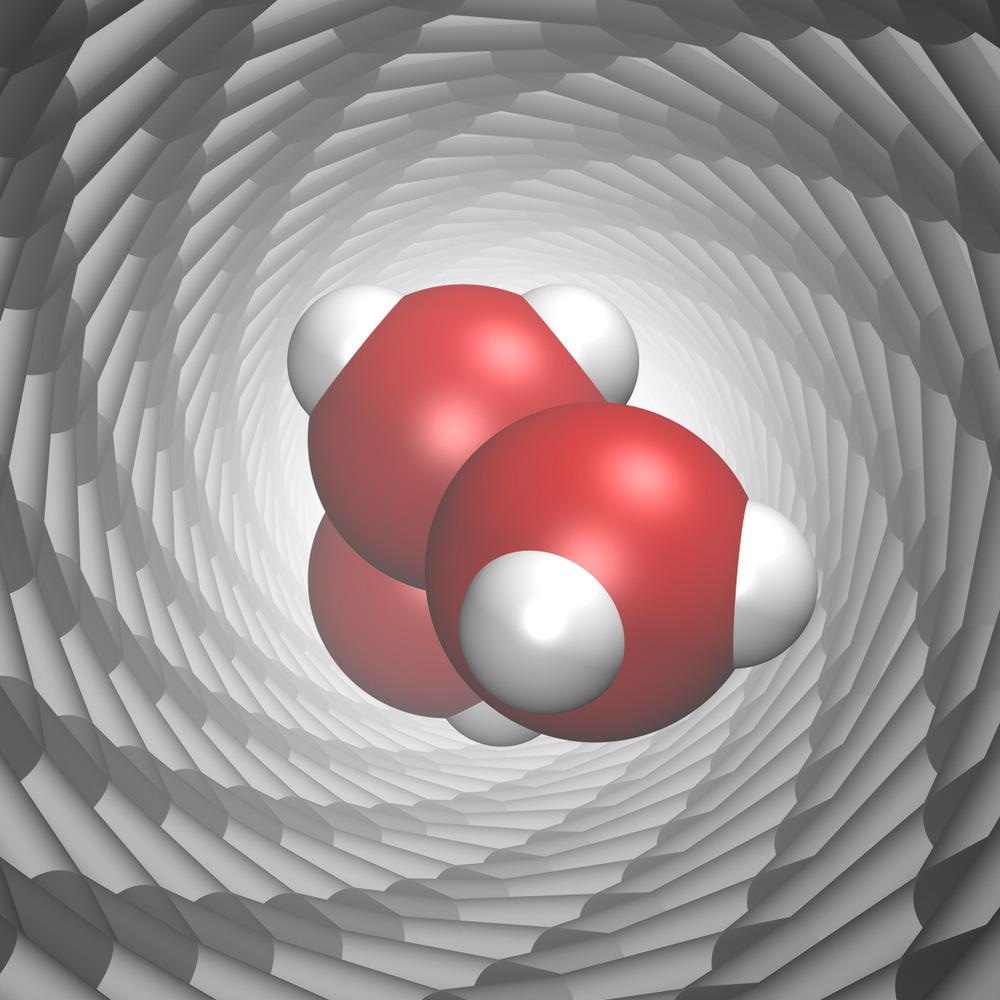The study and use of nanofluid flow in and around objects at the nanoscale is an area of study that has existed for many years. In this article, the current applications and a future outlook of nanofluidics are explored in more detail.

Image Credit: Simon Gravelle/Shutterstock.com
Through the advancement of science and technology, studying phenomena at the nanoscale has become progressively easier. Apparatus like the atomic force microscope (AFM) and the scanning tunneling microscope (STM) help to inspect and create nanostructures, while nanofabrication techniques involve the use of lithography and bottom-up assembly methods.
Nanofluidics has followed a similar growth trend, as new methods for manipulating nanoscale objects and synthesizing novel nanomaterials in the liquid phase help to broaden understanding of the unique effects in well-defined nanofluid environments.
Still, challenges remain in moving this field from physics-focussed lab work to application-oriented devices.
Nanofluidic Applications
Osmotic Energy Conversion
One potential source of renewable energy comes from osmotic energy conversion; however, low commercial ion exchange membrane performance means that existing osmotic energy conversion methods limit power output. High-performance reverse electrodialysis is made possible by nanofluidic channels with specialized ion transport dynamics.
Desalination and water splitting can be integrated with this osmotic energy conversion by changing the charge distribution and structure to decrease resistance and increase energy conversion.
Carbon Nanotubes
Research has shown that carbon nanotubes (CNTs) can be used directly as nanofluidic channels without the need for expensive lithography techniques. Initially, these CNT devices were difficult to make, triggering molecular modeling investigations hoping to examine the fluid properties of CNTs.
To learn more about such properties of single CNTs, researchers are increasingly turning to experimental studies of transport, which make use of the fact that the phenomena explored are averaged throughout a large number of CNT nanochannel.
Although embedding individual CNTs in micro-and nanodevices has proven difficult, researchers have created single-CNT nanofluidic platforms using diverse methods.
Using CNTs as building blocks, these platforms can be used to create flexible devices with sophisticated nanofluidic networks in the future.
Fabrication Methods
Pore geometries and well-defined channels of nanofluidic materials are hampered by a lack of reliable procedures for their fabrication.
Nanofluidic devices are created through advancements in nanomaterials and nanofabrication processes, boosting research and industrial interest.
For example, experiments and simulations have been conducted to explore the interaction of water and ionic molecules between layers of two-dimensional materials such as carbon, MoS2 and hexagonal boron nitride.
In single and multi-layered materials, pores with defined sizes and geometries can be created through ion or electron irradiation. Additionally, some materials can generate nanotubes and be integrated into membranes or examined as a standalone material.
Future Outlook
The field of nanofluidics will continue to develop as increased collaboration across different fields of science and technology helps to integrate and broaden the benefits of nanofluidics.
In the future, it is likely that energy harvesting and filtration technologies will be boosted by the translation of effective nanofluidic technologies.
References and Further Reading
Berg, J. C. (2005). Nanofluidics: what is it and what can we expect from it? Microfluidics and Nanofluidics, 249-267. https://doi.org/10.1007/s10404-004-0012-9
Nature Materials (2020). Nanofluidics is on the rise. [online]. https://doi.org/10.1038/s41563-020-0633-8
Xu, Y. (2018). Nanofluidics: A new arena for Materials Science. ADVANCED MATERIALS. https://doi.org/10.1002/adma.201702419
Zhen Zhang, L. W. (2021). Nanofluidics for osmotic energy conversion. Nature reviews materials. https://doi.org/10.1038/s41578-021-00300-4
Disclaimer: The views expressed here are those of the author expressed in their private capacity and do not necessarily represent the views of AZoM.com Limited T/A AZoNetwork the owner and operator of this website. This disclaimer forms part of the Terms and conditions of use of this website.